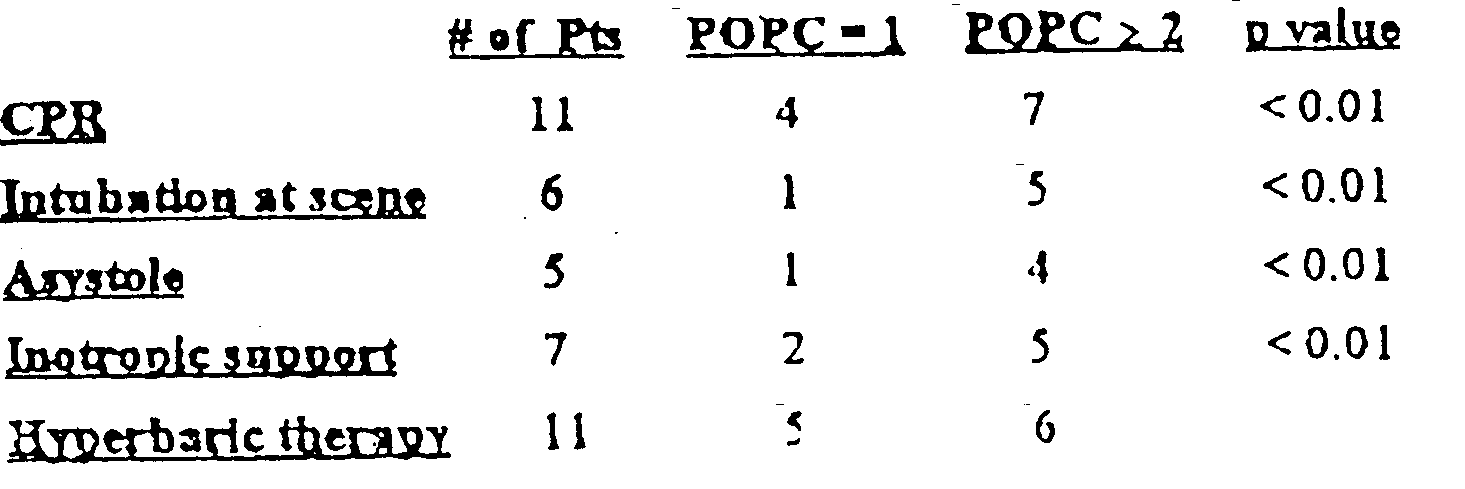
| 11 th Annual Pediatric Critical Care Colloquium |
| Session/Time | Poster/Thu, 4:30 - 6:30 PM |
| Title | Outcome of Pediatric Intensive Care Patients Following Carbon Monoxide Poisoning |
| Author | DM Lopez, JS Weingarten-Ararns, EE Conway, Jr. |
| Affiliation | Department of Pediatrics, Albert Einstein, College of Medicine, Bronx, New York |
| Introduction | Pediatric carbon monoxide (CO) poisoning his received little attention in the literature. Pediatric intensive cam unit (PICU) outcome for patients adan'tted following CO poisoning is lackin& The purpose of this study was to evaluate the outwine of PICU patients following CO poisoning. |
| Method | We reviewed the charts of PICU patients admitted with the diagnosis of CO poisoning from June 1990 to June 1997. Charts were reviewed for: age, sex, PRISM score, prehovital vital signs and inberventious, carboxyhernoglobin level (COHb), initial pH, base excess, need for incubation, site of intubaticm, inatrapic suppom hyper-baric therapy and pediatric overall performance catcgwy (POPC).' The POPC scale (1= good overall performance, 2 = mild overall disability, 3 = moderate overall disability, 4 = severe overall disability, 5 = coma or vegetative state, 6 = brain death) his been shown to be both reliable and valid for asmssing the outcome of patients requiring intensive care. Data were analmd via student t-teat and chi-square. |
| Result | Twenty patients were
identified with CO poisoning. The mean age was 55.8 months (range 5 days to 14.4 years),
mean COHB was 26.4% (range 6.3 - 35.7%), meam PRISM score was 19.1 (range 3 - 41).
Preexposure POPC was I in all patients. There were two deaths, one secondary to
cerebral herniation and the other due to multi system organ failure. Five childmm
had mild surface burns with aff cted areas of less than 4%. Childrm with initial
carboxyhemoglobin level <21"/N statistically had a better discharge POPC. POPC scores are at discharge-. Initial 2rterial blood gas, base excess, bicarbonate, ziucose, CPK ,nd length of hospital stay did not correlate wiL4 outr-ome. < 21%, statistically had a better discharge POPC. POPC scores
are at discharge.
|
| Conclusion | The outcome of pediatric patients admitted to the PICU with carbon monoxide poisoning is significantly worse if the patients were asystolic, required intubation or CPR in the field, or needed Geotropic support- Carboxyhcmoglobin levels greater than 2 1 % were also associated with a poor outcorne. Uso of hypeybario therapy, length of stay, and initial pH did not correlate with outcoine. ' Fiser DHI. Assessing the outcome of pediatric intensive care 1992, 121:68-74 |
Use your browser's back button to return to the appropriate index of abstracts...
Back to PCCC 98 Abstract Introduction | Back to PCCC 1998